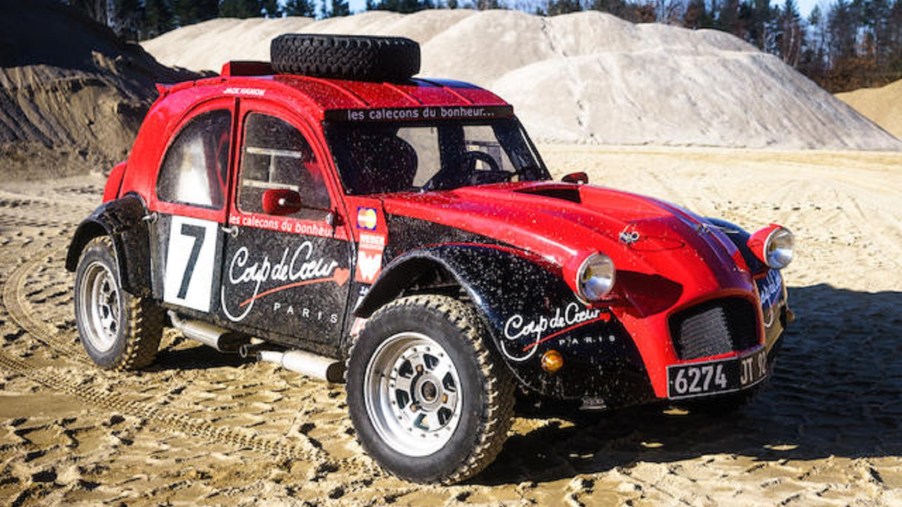
This Citroen 2CV Became a Rally Car With the Help of 2 Engines
‘Innovative’ is a term often thrown around classic Citroens. In the 50s, for example, the DS wowed onlookers with front disc brakes and self-leveling hydropneumatic suspension. The later SM took the latter to new heights (pun intended) and introduced features like rain-sensing wipers and hydraulically-assisted steering. But before those came the minimalist Citroen 2CV, explicitly designed to comfortably travel across rutted fields at speed. But when one 2CV owner wanted to go rallying, that wasn’t enough.
Turning a Citroen 2CV into a twin-engine Moroccan rally car
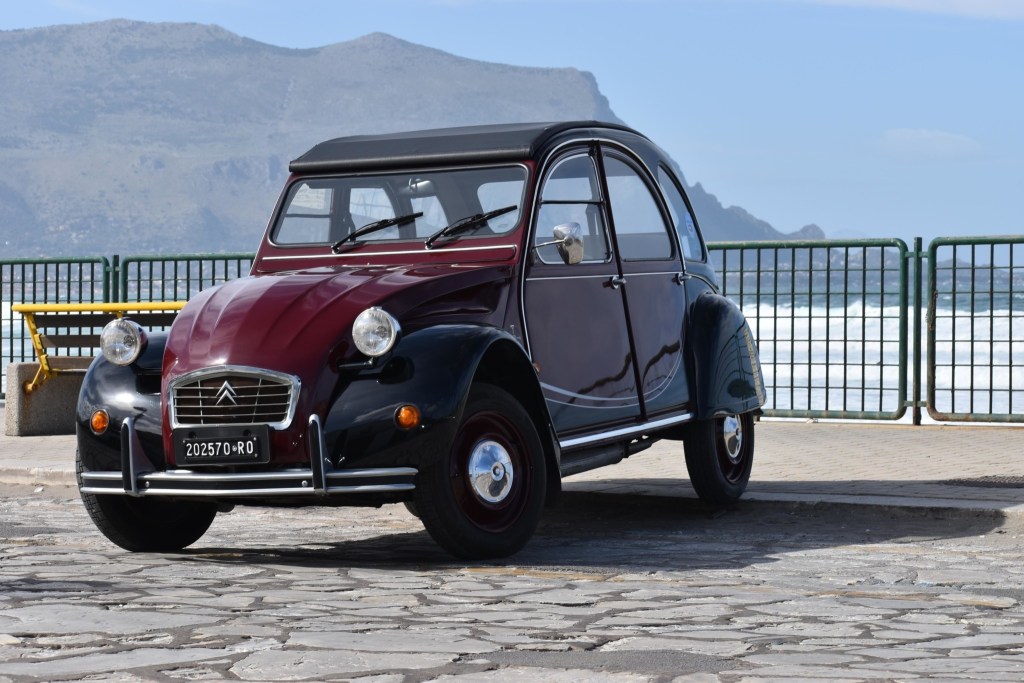
The Citroen 2CV was never a powerful car. At first, it had a 375cc air-cooled two-cylinder with 9 hp. And even in 1990 when production ended, that had only grown to 602cc and 30 hp. This is why, when Jack Hanon was turning his 2CV into a rally car, he swapped in a 1.3-liter flat-four engine from the Citroen GSA, Hagerty reports. Two of them.
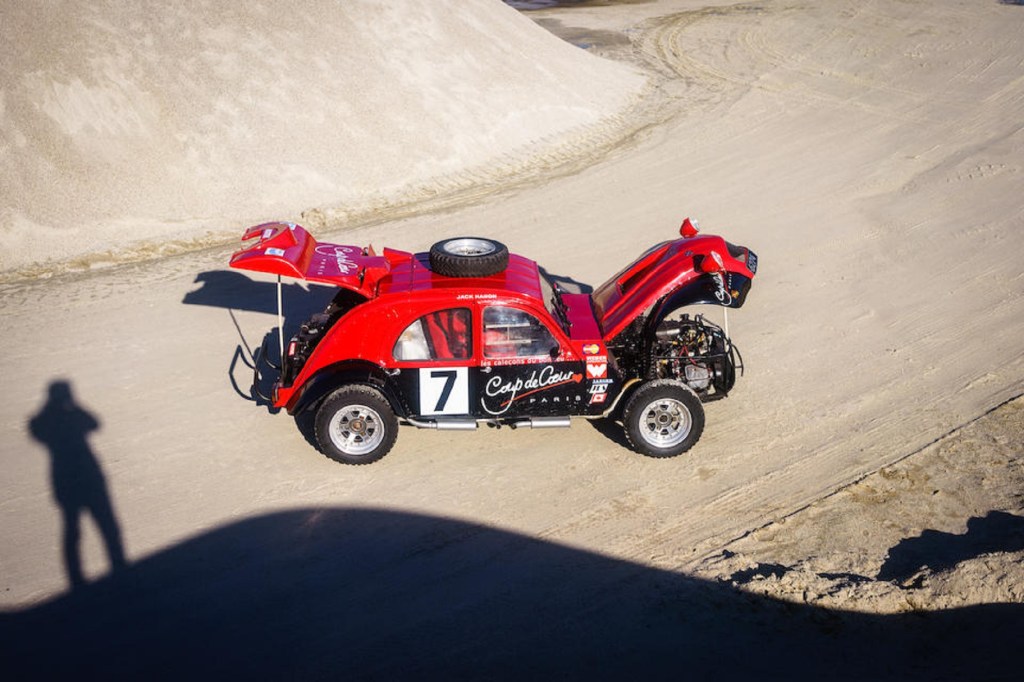
Yes, Hanon’s Citroen 2CV has two 1.3-liter engines, one in front, and one in the back. Together they have 130 hp, and each drives one set of wheels. Meaning, like the Volkswagen Golf Pikes Peak racer, it has all-wheel drive. However, while the extra engine is arguably the most substantial modification, it’s not the only one.
To start, it has a fiberglass body, resulting in a 1785-lb curb weight. And the frame is actually welded together from two Citroen Amis. Hanon’s Citroen 2CV also has 4-wheel independent suspension and 12” of ground clearance, Auto Classics reports. The suspension also features two sets of shocks and springs at each wheel, Hagerty reports. Plus, this rally-racing 2CV has disc brakes, a roof-mounted tire carrier, and, naturally, off-road tires.
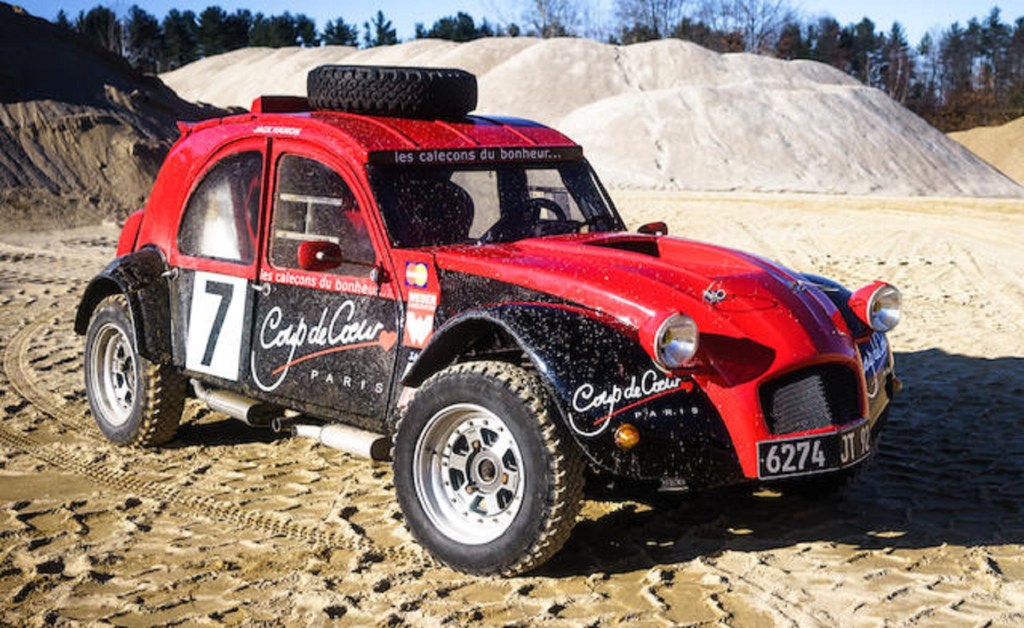
This twin-engine Citroen 2CV first hit the dirt in the 1985 Morocco Rallye de l’Atlas, a race spanning 1800 miles, Silodrome reports. Hanon repeatedly competed there, and in other races, over roughly a decade before moving to Canada.
As intriguing as this 2CV is, Hanon isn’t the first to give one an extra engine. He actually created it in homage to a similar factory creation: the Citroen 2CV Sahara 4×4.
The Citroen 2CV Sahara 4×4 did it, too
As capable as the original 2CV was, Citroen wanted to give it more capability with 4 driven wheels, Silodrome reports. Unfortunately, its engine couldn’t really deal with the strain of an AWD or 4WD system, Road & Track reports. So instead, Citroen put a second engine in the 2CV, creating the Sahara 4×4.
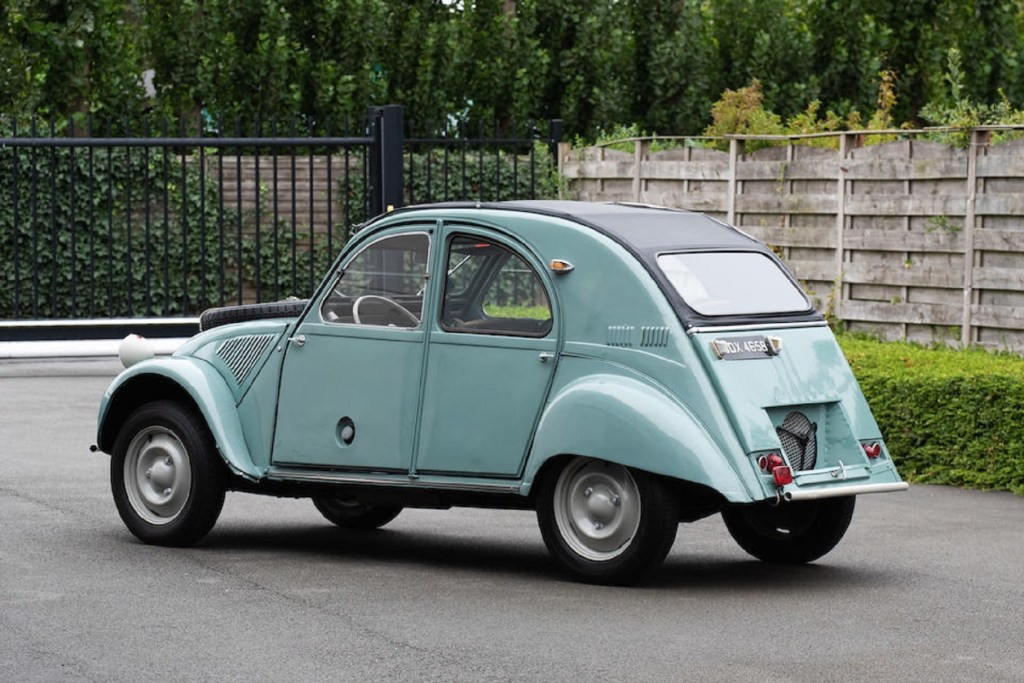
The Citroen 2CV Sahara really is that simple, Automobile reports. Each engine drives its own set of wheels, and both are linked by a shared clutch, throttle, and 4-speed transmission. However, to prepare it for its target audience in North Africa, Citroen did give it a few more modifications, Hemmings reports.
The 2CV Sahara has a stronger frame than the standard model as well as front and rear skid plates. It has 4-wheel independent suspension, but the dampers are mounted horizontally so they don’t snag on obstacles. And while the 2CV Sahara has drum brakes, they’re mounted inboard, so water and mud don’t interfere. Plus, there’s a hood-mounted spare tire.
The Citroen 2CV Sahara isn’t particularly fast. With a combined 27 hp at launch, later upgraded to 36 hp, its top speed is 60 mph, Autoweek reports. However, because of its weight distribution and 1400-lb curb weight, it’s surprisingly capable off-road. Hemmings reports the 2CV Sahara can climb 45% grades. Plus, with two engines, if one fails, the other can still propel the car home.
How to get one of these twin-engine classics
As of this writing, Hanon’s two-engine Citroen 2CV racer is up for sale. Bonhams predicts it will sell for $20,000-$33,000 when it crosses the auction block on December 11, 2020. And while that’s noticeably more expensive than the average 2CV price, it’s cheaper than a genuine Sahara.
Citroen made just 694 2CV Sahara 4x4s, Gooding&Co reports. It’s estimated fewer than 100 still survive, the Lane Motor Museum reports, though there have been replicas and homages over the years. As a result, an original 2CV Sahara commands a high premium over a standard model. In May 2019 one sold at an RM Sotheby’s auction for roughly $90,500. And in October 2019, a 1964 example sold at a Bonhams auction for $104,604.
Mo’ engines, mo’ money.
Follow more updates from MotorBiscuit on our Facebook page.


